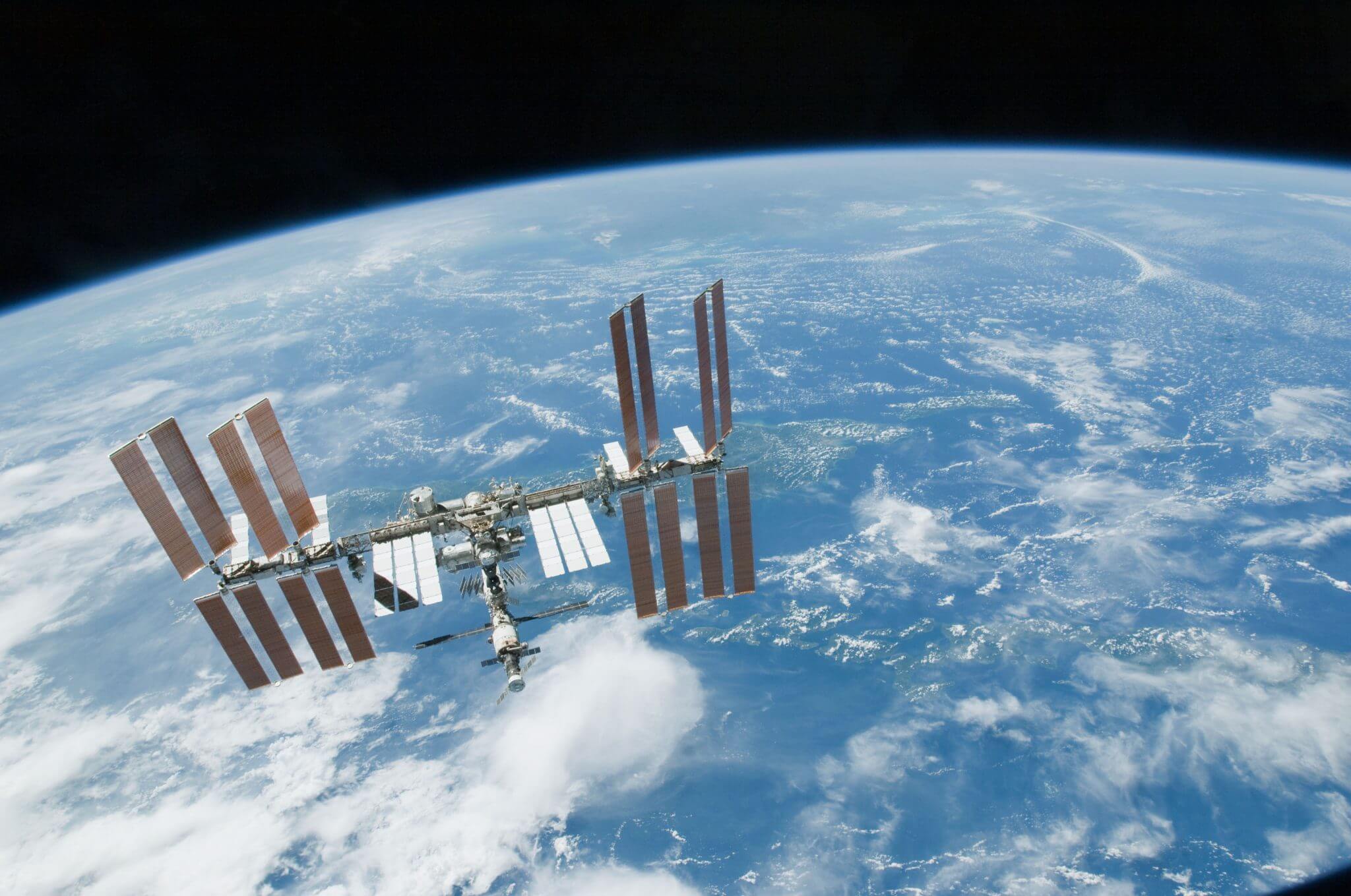The International Astronautical Congress (IAC) is held every year in a different world city. As China has become the “third force” in manned spaceflight, it was logical and correct that Beijing, China’s capital city, should be selected as the venue for IAC 2013. The 64th IAC was held at the China National Convention Centre from 22-27 September. Attendance was high at over 3500 paying attendees – though it should be noted that many (students, lecturers, press) were subsidised. The IAC attendees include engineers, scientists and administrators from space agencies and companies around the world. The importance of the Congress is actually in the behind-the-scenes bilateral and multi-lateral meetings held between different space agencies. Nearly all the heads of the World’s major space agencies were in attendance. It is this international involvement that sets it apart from other more commercially orientated space conferences.
The Venue: the CNCC – very good and well organised but where were the invitation letters?
This year’s conference was at the CNCC – China National Convention Centre which is set in the Olympic park and near to the Bird’s Nest Olympic stadium built for the Beijing Olympics in 2008. The CNCC was impressively large and at least two other major conferences and exhibitions were going on at the same time. The only real weakness of the venue was a lack of seating at the cafeterias.
The lecture rooms were good and while it would have been advantageous for the lectures/presentation orders to be put on a sheet outside a room, eventually the Chinese organisers did at least put up the titles of each session. With audiences of thousands of delegates, the main opening ceremony and the most important plenary sessions were shown in the main confernce hall. The hall was impressive with the only negative aspect being that the rear escape doors were usually locked which would been serious had a fire broken out.
Overall the organisation of the conference was very good – with the timetables working as clockwork and even convoluted way of getting the translation headsets working well. Nevertheless, there was a major and indefensible problem with the significant delays in invitation letters being sent out. Without one of these letters, would-be attendees could not get a Chinese Visa and hence some were thus prevented from attending IAC 2013 at all. Whether this was by design (it may be retaliation for the US ban on any Chinese national from entering NASA buildings) or by incompetance, one could not tell. Either way, this was unacceptable and detracted from what was otherwise an excellent Congress. The IAF (International Astronautical Federation) should take note of this failure by the Chinese end of the IAC 2013’s organising committee, in case it is ever tempted to pick a Chinese city again.
The City: Beijing (Peking) – no longer the individual city it was but it feels freer than expected
Previously known as Peking, Beijing has reportedly changed significantly in a period of abour 30 years. There are no longer any Mao suits or floppy hats to be seen. Meanwhile, the notion that there are 9 million bicycles in Beijing is well and truly over. The car is now king in a city which has become more like a western one with a grid of large boulevards dominated by tall buildings and excessive car traffic. This concrete jungle has, according to long time visitors, now robbed Beijing of many of the nicer elements of its previous architectural history and character. Those twee parts which remain are now dominated by bars and tourist gift shops.
Nevertheless, Beijing still has some interesting sights of course: not least Tiananmen square and the Forbidden City – and perhaps the most beautiful: the Summer palace. While tours were available from the venue to see these as well as to visit parts of the famed 5,000 mile long Great Wall of China. Built in the early 15th Century to defend against maurauding Mongols, this magnificent Great Wall remains a fantastic achievement and icon. Whether, the wall is the only man-made object which can truly be seen from space with the naked eye, remains debatable. It might just be possible with the use of some high resolution stabilised binoculars and with the sun in the right place for the wall to cast long shadows.
China, of course, remains a totalitarian Communist state albeit one now with a capitalist and commercial outlook. Criticising China’s central government or its policies remains forbidden however – even if they do have potential to damage China’s long term economic wellbeing (e.g. China’s one child policy’s eventual effect on the population age profile) . There is, at least, now a public acceptance that mistakes have been made in the past by the Chinese Communist Party. These include the Mao-era famines of the “Great Leap Forward” and the persecutions of the “Cultural Revolution”.
Being capital of this “police state”, Beijing tends to have several self-important internal security men hanging around important buildings and the key road crossings dressed in camouflage uniforms. Meantime, on guard in their smart tunics, are the actual the Peoples Liberation Army looking more like policemen than soldiers. Despite all these, nevertheless, in some ways Beijing felt freer than some other countries which are notionally democratic (Russia comes to mind). And with all this security around, there is, at least a feeling of safety, even if petty theft remains a problem.
The only real trouble is with Internet access. The free Wifi available at the CNCC was just about acceptable albeit with a limited data rate, but users could not use VPN systems to connect with their own office data systems or with social media sites such as the likes of Facebook etc. The small army of censors and jammers of the “Great Fire Wall of China” appeared to be at work in monitoring and blocking web sites on which might, in any way, be used to be critical of central government. Having said that, perhaps the West cannot criticise. Since the revelations of the security whistle-blower, Edward Snowden, it seems that the web communications of US and UK citizens are likewise similarly being spied upon by their own governments.
One annoyance was that many Western mobile phones did not work properly and needed a special sim card to be inserted into them. At this point we have to note that the Chinese ladies in the China Teleocom shop were very friendly and helpful and a credit to the nation that brought them up. All phones have to be passport registered however.
Meantime, security at China’s airports remains tough and in unexpected ways. Airport and border crossings have temperature monitoring cameras to protect the nation from those sick enough to run high body temperatures. These have been installed ever since the SARS and bird flu outbreaks four or five years ago. It is not just sort of monitoring technolgy that China is investing in. China now known to be experimenting with networked facial recognition systems so that individuals could theoretically be tracked at all times. And where China goes today, perhaps it will be the West’s turn tomorrow. (November 2013 update: while the UK police forces have been experimenting with it for some time, the UK supermarket chain Tesco has just announced that it is introducing improved “live” facial recognition cameras at its petrol stations for identification and advertising purposes. As such “1984”Orwellian-style continuous surveillance is already becoming a reality in the UK).
With the value of the Chinese Yuan (Renminbi) currency still being artificially held down by the government, many items seem very cheap to visitors. Restaurant food is surpisingly cheap as are taxi fares – at least on the official yellow striped cabs – though the private ones can be con-merchants. Even cheaper is the Beijing metro system which was dramatically enlarged and improved before the 2008 Olympics. With its excellent air-conditioning, and flickering tunnel advertisments, one finds that you never want to use London’s underground tube again.
Smog has long been an issue for this city. While better than it was in the past now that much of Beijing’s heavy industry has been relocated, it remains a problem. In fact, now most of the smog is caused by automobile traffic. In an attempt to reduce this and cut the worsening congestion, on working days only half the cars are allowed on the road at any one time. This is enforced by the monitoring of car registration numbers.
The Opening Ceremony and Reception: an excellent pair of events
The IAC 2013 opening ceremony was one of the best there has ever been. It was not too long on speeches and while it may have had one or two too many entertainment acts (eight in total) these were all excellently performed and beautiful to see and hear. The first day’s evening reception was also very – with good food and drink – and plenty of it. It marked a bounce back from the debacle in the previous IAC in Naples when the food and drink ran out in very short time!
China, of course, is immensely proud of its much admired space programme and was at pains to note it to the participants during the presentaions and via a special plenary session. These were, in fact, sadly longer on rhetoric and shorter on detail than many would have liked – one of the main reasons why participants came to China.
There were other social events that allowed partipants to enjoy themselves including those of cities vying to be the hots for future IACs. The Mexican night held by those wanting Guadalajara to beat off fellow finalist Kiev for the honour of holding the 2016 IAC was a success. Good food and fun – and in the vote of delegates they won. Next year’s IAC is in Toronto with Jerusalem following this in 2015.
Plenary Sessions: space cooperation works well…well sometimes
The first and most important plenary session, involved all the head of space agencies. The session had a focus on international coperation in space. Interestingly, while stymied by his own government’s official position, NASA’s Head Charles Bolden appared to in favour of taking China as an international partner though he was more evasive about whether China should be part of the Global Exploration Roadmap discussions.
Via interpreters, Dr Ma Xingrui, the titular head of the Chinese space programme as Administrator of the Chinese National Space Administration, reiterated that while China was in favour of international cooperation in space, it had not actually been invited to take part in the Global Exploration Roadmap.
While international cooperation remained an ideal, it was increasingly noted at the Congress that such cooperation was often in the form of bilateral agreements between nations. Nevertheless, conversely Charles Bolden noted that while NASA can consult with multiple nations on space cooperation, it is officially banned by the US Congress from having bilateral discussions with China.
While many of the speakers noted how much there were in favour of cooperation, Dordain noted the advantages that competition has.. At a subsequent press conference, Jean-Jacques Dordain admitted that international projects did not always go well and that the ExoMars experience in which NASA reduced its funding was not an ideal example of Space cooperation.
ESA is now incharge of building the service module for NASA’s Orion spacecraft. To the suggestion that the European Vinci cryogenic engine might also make an excellent upper stage engine forthe SLS heavy lift launch vehicle (the RL-10 is smaller than ideal while the J-2X appears to be too large for the earlier missions), ESA’s head, Jean-Jacques Dordain, refused to be drawn except to note that the Vinci “you are right, Vinci is a good engine.”
Paying tribute to Russia’s role as the main transport system for the International Space Station Bolden said: “Our Russian partners have been tremendous”. However, Bolden noted that soon it would be commercial US systems that would soon be flying asttronauts to the International Space Stations. Bolden hopes to be part of activities that will help to entend the life of the International Space Station. Bolden noted that funding issues were paramount in his mind. “If we don’t get funding, all bets are off.” he said.
For longer range spaceflight, Bolden re-iterated that he was more in favour of going to other destinations ahead of a manned return to the Moon. Bolden noted that there were no plans to raise the payload of the SLS launch vehicle ahead of the design minimum of 130 metric tons to low Earth orbit. On China’s manned lunar plans, Dr. Ma reiterated that China’s heavy lift rocket would have a liquid oxygen/kerosene powered core stage and use the same combination for the boosters with a paylaod of at least 100 metric tons to orbit.
Of the other heads present, the head of Japan’s JAXA agency Naooki Okumura described his enthusiasm for international cooperation and noted his agency’s plans to design a new launch vehicle to replace the H2 series. Sergei Saveliev, No 2 at Roskosmos, noted that Russia was fully engaged in its preparations to get the new Vostochny space launch base ready. Canada’s space agency head General Walter Natynczyk stated that Canada would stick to the space technology it was good at rather than compete across the board. The Director of the Vikram Sarabhai Space Centre told the congress that the Indian Space Reseach Organisation ISRO) was looking forward to the GLSV launch in the first quarter of next year.
In addition to the “Heads of Agencies” session, there were also plenary sessions on human spaceflight, China’s space activities (see China space story) and a special on celebrating Women in Space including a speech by China’s first woman in space Liu Yong. While these were short on detail, there was also a special sessions with deep space spaceflight expert Dr Ed Stone noting the major events in the Voyager space probe’s life and its recent departure from the solar system.
Exhibition: China was out in force
The exhibition was relatively small – a single hall with few US firms though there was a European presence and, as you would expect, a strong Chinese one. Chinese exhibitors included the CASC and its CAST and CALT subsidiaries, CASIC – CASC’s defence equivalent, the China Great Wall Industries Corp (launch provider). China had several rocket models on display, and the full size actual re-entry capsule from the Shenzhou 10 manned mission.
Of the foreign exhibitors there was Astrium and SpaceDev with a surprisingly strong presence by South Africa. The UK stand had revolutionary air breathing engine manufacturer Reaction Engines Limited (this writer is a small shareholder) attacting a lot of attention. Next to it was the British Interplanetary Society stand who kindly let it be a point of contact for Flightglobal, and Commercial Space Technologies, which has become noted as a key arranger of Russian and Ukranian launches for small payloads.
The technical sessions: too many arty subjects but reusable rocket dreams carry on
There were several strands of presentations taking place every day, ranging from deep space exploration to rocket engine design, from space debris mitigaion to human biology in space. Some of the “technical session” strands were not really technical at all and seemed to be more arts and business based talks than scientific (not good sign). Apart from space law – there were also sessions on business, histories, sociological aspects, space policy and space art. There was also a long student session. The slightly “hippy” nature of the event was even more evident by the lady causing transendental meditation notes on her resonating bowls outside some of the meeting rooms. While this writer usually likes this, there is a time and a place.
As usual, with so many lecture strands going on at the same time at IAC, participants found themselves in the difficult position of wanting to be in two places at once. While this report is too short other that to cover but a few of these. Here are the few that took your correspondent’s eye.
While it is a long running subject as IAC, the use of air-breathing and reusability continues to fascinate the conference and there were some very interesting papers on the subject – though some of the concepts were much more advanced on the others. Probably one of those in the latter group was Mark Hempsell’s excellent briefing (IAC-13.D2.4.6) on the latest research on Reaction Engine’s SABRE air breathing rocket engine and the prospects of the Skylon launch vehicle which, it is hoped, will be able to carry 15 tons of payload to LEO. Having been prone to hubris in the past, Hempsell managed stay believable about the development and funding timeline. Nevertheless, despite this restriction Hempsell still managed to convey his enthusiasm about just how revolutionary his firm’s engine design could prove to be.
The research on the SABRE engine is currently funded by the UK government withsome technical and financial help from ESA who are interested to find out if Skylon will actually make a practical vehicle. While presenting in Beijing, Hempsell was however slightly coy about whether Reaction Engines would be allowed by the UK government to receive Chinese funding (several Chinese academies are believed to be interested in the technology). This writer has a small financial interest in Reaction Engines so he was the one who asked this question, a fact that Hempsell alluded to when answering the question.
While Reaction Engines’ SABRE (Synergistic Air-Breathing Rocket Engine) is rocket based using compressor and heat exchanger technologies, other presenters tried to show that their own reusable air-breathing concepts would be a match for in terms technology and performance. Liang Tian of the University of Beihang, described one rocket based combined cycle concept used a rocket placed inside a ramjet/scramjet (IAC-13.C.4.9.5 ) noting how he was testing various configurations and mass flow rates to boost the best pressure recovery ratio. Such engines are not just possible power plants for a single-stage-to-orbit spaceplane or dual spaceplane first sage. They can also be used on long range hypersonic cruise missiles.
Dual spaceplane concepts refuse to die, despite the threat of Skylon’s single-stage-to-orbit solution. In IAC-2013.D2-4-5 Dr Martin Sippel of Germany’s DLR persists in his two-stage hypersonic transport SpaceLiner concept which is designed to cover long distances at near orbital speeds. Sippell’s problem is that in developing two-craft vehicle using conventional rocket engines instead of a single one, the cost rises to €32 billion, nearly twice the projected cost of Skylon or its Lapcat hypersonic transport derivative (which is admittedly much slower than SpaceLiner). As such, this would probably make it too expensive to build. Still his paper did offer some interesting design details including cross feeding of fuel between stages so that the upper stage is always full at separation and some detailed aerothermodynamic analysis including his conclusion that he would need active cooling for his upper vehicle’s leading edge.
While air-breathing designs involving ramjet/scramjets seem to be more favoured, the trick with any ramjet based vehicle or missile is to get it to a fast enough speed (usually above Mach 1) for the engine to provide positive thrust. Instead of using a rocket booster or internal rocket engine for this, one way round having to use one of these is to use a separate booster sled to launch it. A concept described by Xu Yingshan (IAC 2013.D2-4.8) is to use a 9kmlong Maglev electromagnetically levitated and accelerated sled to launch such a craft from the ground at Mach 1.6. When asked how he intends to separate the vehicle from such a sled at this velocity, Xu Yingshan, admitted that it was a problem before suggesting moving the Maglev rail and sled system to a higher altitude with a thinner atmopshere (the Himalayas come to mind!). Having tried to prove that the system would outperform the Skylon spacecraft, at least on a payload fraction basis , Xu admitted that the variable geometry wing craft was “just a concept” so far.
For more realistic conventional space transportation, Todd May, NASA’S Manager of the SLS launch system, itemised the progress of the SLS launch vehicle (IAC D2-1-10) and reiterated how a mission to the L2 Lagrangian point might be accelerated by a lunar flyby. NASA’s exploration supremo Bill Gerstenmaier later recounted, along with an animation of its complicated trajectory, of how NASA plans to capture a small asteroid into a “distant retrograde orbit” around the moon and send astronauts to the 7m rock to work on it.
China noted its Heavy Lift launch vehicle selection process in Li Shuo’s presentation (IAC-D2.9-D6.2.1) showing how China has actually eschewed the choice of using a Lox/hydrogen core and Lox/kerosene boosters which may yet be used for the heaviest Block 2 of NASA’s SLS heavy lift launch vehicle.
While Russia concentrates on getting its Vostochny space base ready for launch operation, its neighbour Ukraine has a launch vehicle about to fly from a new launch site – this one in Brazil. The Tsyklon 4 (Cyclone 4) was discussed in depth (IAC-13.D.2.2.6) by Sergiy Guchenkov of Alcantara Cyclone Space, Brazil. He noted that the first flight rocket was due in December. The operation is targeting smaller payloads with a special no-collision separation system.
By flying from Alcantara in Brazil i.e. near the “best spin boost” of the equator, the rocket now has the capability to put small spacecraft into GTO (Geostationary Transfer Orbit) of upto 1.6 metric tons. With improvements, this they hope to raise to 2 metric tons. The g-load on satellite paylaods has been reduced to 6 g and the launch vehicle has a 4m diameter fairing.
While past International Astronautical Congresses have had legions of papers on liquid flyback boosters, this year, there was only one significant paper flying the flag for these devices. In IAC 13.D2.4.11, Mr. Adriaan Schutte, of the Australian launch firm, Heliaq Advanced Engineering, noted his plans for the Austral modular launch vehicle. Its three LOx/Ethanol based burning rocket boosters for the smaller configuration rocket are designed to fly back to base using a slew wing and a T-tail after separation – though the weight of jet engine on board to achieve this sounded a bit payload reducing.
Nevertheless, Mr.Schutte in his surprising South African accent, was more convincing about how expected flight rates were not enough to make having all the main Lox/methane burning stages reusable worthwhile. However, he added that reusability was definitely worthwhile for the boosters. The early smaller version of the Austral will be able to carry 150kg to 1.1 metric ton into orbit with the laeger version able to carry upto 8 metric tons.
Overall Summary – a great success but invitation delays were shameful
While its organisers did their reputation no favours by not sending out invitation letters in good time for some to attend, overall thie IAC 2013 Beijing conference and exhibiiton was an outstanding success. Even more importantly, depending on your point of view, at least the welcome reception’s food and wine did not run out! So congratulations for that and our thanks to the IAF and the IAC’s organisers for all their efforts. We hope to report from IAC 2014 in Toronto, Canada – if we are invited that is.









